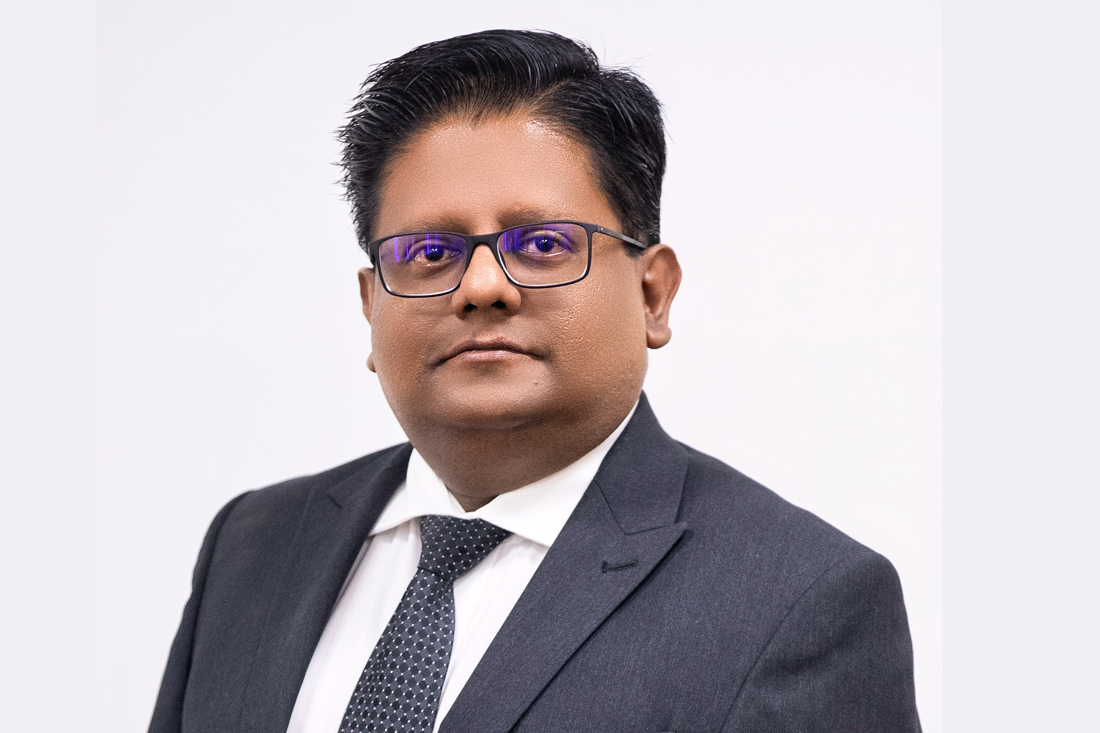
30 Jun Interview with Hon. Ashni Singh, Minister of Finance Senior Minister in the Office of the President, Guyana
What highlights would you like to point out in terms of the recent economic performance of Guyana?
Last year we had extremely high rates of economic growth approaching 44 percent and extraordinary growth rates were also reflected in the non-oil economy. These extraordinary rates of economic growth, both overall and in the non-oil economy, are not a one-off feature or something that is observed only in a single year. What we are observing in Guyana is astronomical. Since 2021, we have had rates of economic growth that have exceeded 20 percent overall. In some cases, they have been considerably higher than 20 percent. We anticipate that these extraordinary rates of economic growth will continue during the entirety of this decade.
We began producing oil in 2020, starting with one offshore platform, a floating production, storage and offloading unit. The first platform produced 120,000 barrels of oil per day. We now have three platforms producing oil, with a total daily production of approximately 650,000 barrels per day. In the last quarter of this year, we’ll be deploying a fourth platform. We anticipate that before 2030 we will be producing more than 1.2 million barrels of oil per day. This rate of deployment of productive capacity and ramping up of actual realized production is without precedent worldwide. The discovery and coming into production of oil have opened up tremendous economic possibilities. Oil production didn’t only happen because of the discovery of the resource; for several years before that, we have been working diligently to make Guyana an attractive destination for investment, while also strengthening and reinforcing our economic fundamentals.
From 2006 to 2014, we experienced uninterrupted positive economic growth, which was significant given that this period coincided with the global financial crisis and successive episodes of commodity price upheavals. In the pre-oil era, we were able to achieve almost a decade of uninterrupted strong positive growth. This was the result of sustained policy efforts to make Guyana not only a hospitable destination for foreign investment but also an attractive and competitive destination for both foreign direct investment and domestic private investment. Our government has realized a globally competitive non-oil economy. During this period, our explicit policy objective is to establish the necessary policy and public investment prerequisites to build a globally competitive non-oil economy for the long term.
There are several sectors in which we have very evident comparative advantage like agriculture with our vast endowment of arable cultivable land and abundant availability of freshwater. We also have a huge comparative advantage in tourism. Guyana is home to some of the most spectacular tropical flora and fauna, boasting some of the world’s richest biodiversity. We are home to remarkable natural wonders, including the Kaieteur Falls, the world’s steepest single-drop waterfall, as well as hundreds of other waterfalls, rivers and geological formations that provide us with an incomparable wealth of natural assets. Tourism has tremendous potential, but previously Guyana was not a very well-known destination. There were challenges with connectivity. A lot of that is changing now because we have so much visibility.
Guyana is much better connected now. More flights and new airlines are coming to Guyana from all over the world. As a result, the airlift and accommodation capacity have increased significantly, with several internationally branded hotels currently under construction. Guyana has a strategic location, which is an asset that is often not fully appreciated. We are historically and agriculturally connected with the Caribbean because we share the British Commonwealth legacy.
Some of the major investments we’re working on include upgrading the roads to Brazil, developing a rail system and constructing a deep-water harbor that will connect the northern Brazilian state of Roraima through Guyana to the Atlantic coast. We are working with our counterparts in Suriname to build a bridge across the Suriname River as well. Guyana serves as both a physical and economic bridge between the Caribbean and mainland South America, presenting vast economic opportunities and potential.
What major infrastructure projects are currently underway, including high-profile initiatives in transport and flood management?
One of the historical constraints we’ve faced is the small size of the domestic market. However, with better connections to Brazil and Suriname, this limited domestic market would immediately expand to include northern Brazil and Guyana. We have already begun phase one of the road construction from Linden to Bambura and we are in the advanced stages of examining options for the road from Bambura to Lethem, on the border with Brazil. Forty-two concrete bridges are already at an advanced stage of construction, with many already completed. We are also at an advanced stage of conversations with the Suriname Authorities on building a bridge. These transport infrastructure projects are being developed by the government to improve connectivity with our neighbors, open up trade opportunities and expand the economic space and market access for producers of goods and services in Guyana.
In addition, we are building out brand new highways to improve connectivity in communities. For example, we are building a bridge across the Demerara River and Berbice River. We have constructed a new Heroes Highway and several new corridors along the East Bank of the Demerara River. These corridors will connect the East Coast to the East Bank, bypassing Georgetown, which will help ease congestion as the city continues to grow rapidly. Disposable incomes are growing and household well-being is improving significantly, leading to more families owning cars, so the volume of commuter traffic has increased tremendously. We have the Ogle to East Bank Road that’s at an advanced stage of construction. Apart from the roads that improve connectivity within communities, we have upgraded thousands of community roads, which enhance living conditions and the environment within these communities. Historically rural villages didn’t have concrete roads but now we are building concrete roads.
We recognize the world and the domestic economy are both changing at a meteoric pace. The Guyanese economy itself is changing with new skills being demanded and new jobs being created. We recognize how important home ownership is so we have implemented a vast array of policies and made several critical investments to make homeownership more affordable and accessible to Guyanese families. We are rolling out the infrastructure so that additional land can become available for housing and distributing these plots of land in a more aggressive way to make them available for home ownership, but also policy interventions designed to make homeownership more affordable. We have mortgage interest relief which is a fiscal intervention that makes the cost of homeownership cheaper. We have entered into strategic partnerships with banks, enabling them to offer lower interest rates for homeownership through their low-income housing programs. These initiatives specifically target first-time homebuyers entering the housing market, in addition to the investments we’re making in infrastructure.
We have seen in the past and continue to see how these interventions have very significant interactions through multiple channels with economic well-being, both at the macroeconomic level and the microeconomic level. This isn’t only about giving people a home of their own, it’s also about economic empowerment. Because the first-time homeowner now has for the first time an asset that they can collateralize. For many of them, they now have their first interaction with the formal banking system. It’s about financial literacy, financial inclusion and financial empowerment.
What specific strategies are you implementing to strengthen trade and economic collaboration with this region, across sectors like energy, infrastructure and green industry?
We have a long history and a very close relationship with the United States, based on shared values, a commitment to democracy, the rule of law and international law. It is based on a shared recognition of the paramount role of private capital, private investment and private enterprise in the realization of economic growth and prosperity. It’s based on a shared recognition of the importance of investment and trade.
We are seeing the relationship between Guyana and the U.S. take on new dimensions or deepening certain dimensions in private investment trade and commercial ties, which we are seeing beaten dramatically. This applies to companies across all of the U.S. including Florida and Miami. We had the privilege of hosting a visit by the U.S. Secretary of State, Marco Rubio, during which the special nature of the relationship between Guyana and the United States was reiterated.
Miami is the closest big city to Georgetown. Guyana is open for business to investors from anywhere in the world and, in particular, from every single state of the U.S. including Florida. Florida and Miami have the natural advantage of proximity, being in the same time zone and easily accessible. But we are open for business for investors from everywhere in the United States.
Guyana is a country with a huge diaspora everywhere in the world but especially strong in Florida. Do you have any specific program targeting this diaspora?
We have always had a migrant program, which is a standard set of policies that we implement for Guyanese people re-migrating to Guyana. That continues to be available and it’s a very attractive package. It allows people to come back to Guyana and re-import their household effects free of taxes. We provide a lot of support for re-entry and resettlement into Guyana. Over the years we’ve had a re-emigrant housing scheme that people prevented. Over the last four years, we have seen a tremendous heightening of interest amongst the Guyanese diaspora to return to Guyana not just through permanent re-migration, but increasingly members of the Guyanese diaspora is renewing their ties even those who are unable to remigrate fully for whatever reason.
Many people are now again establishing a presence in Guyana even if it means dividing their time between the U.S. Increasingly we are seeing people establish a presence whereby they spend some months of the year in Guyana and the U.S. as the first step to re-enter into Guyana for more or fuller immigration.
Additionally, we are seeing skilled persons looking for jobs and investment opportunities in Guyana because a lot of big international companies are establishing a presence in Guyana now. Even the children of Guyanese who migrated overseas are now able to apply for jobs with major international companies like ExxonMobil, Halliburton, Schlumberger and Baker Hughes. Increasingly, we are seeing members of the Guyanese Diaspora take on these job opportunities, which we welcome.
What’s your final message to the readers of the Miami Herald?
Guyana is the fastest-growing economy in the world and will continue to be throughout this decade, opening up unlimited economic opportunities. This is the moment for people to invest in Guyana or do business with us. The Guyanese government has a strong policy position: we consider private investment to be the driver of economic growth, both foreign and domestic. Guyana is open for business and we especially welcome investors from the U.S. with a particular focus on Florida and Miami.



Sorry, the comment form is closed at this time.